Constellations are focused exhibitions of four to twenty objects brought into conversation with one another, with the option of including descriptive text.
Constellations
 On the Multiple Lives of Bannerstones: Indigenous North America 6,000 BCE to the Present
On the Multiple Lives of Bannerstones: Indigenous North America 6,000 BCE to the Present
Looking at Indigenous bannerstones from what is known as North America, their unique shapes and symmetrically drilled holes carved from an array of lithics, from sedimentary stone to quartz, I wonder what stories they are telling. Do their stories begin with the sculptors who made them east of the Mississippi Valley in 6,000 BCE or do they begin four billion years ago when volcanic heat from the earth’s core melted and congealed minerals to form the oldest terrestrial rocks?
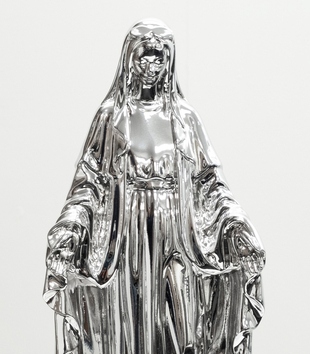 Like a Virgin? Breaking, (un)making, and replicating the Madonna across time, space, and toy stores
Like a Virgin? Breaking, (un)making, and replicating the Madonna across time, space, and toy stores
The authors set the nucleating body of the medieval Virgin in conversation with contemporary reimaginings of the Madonna to ask how hybridization, fracture, insertion, assemblage, color, multiplicity, and meaning around sacred and secular exchange can change the way we know and see in relation to these forms from the medieval to the postmodern.
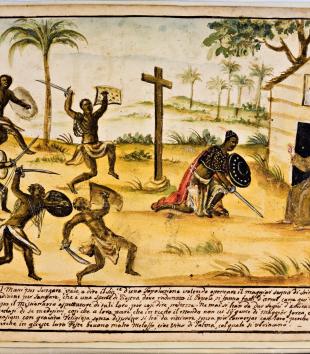 Resoundings of Early Modern Afro-Catholic Festive Culture
Resoundings of Early Modern Afro-Catholic Festive Culture
This Constellation is intended to complement the author's book and give readers access to color versions of some of its illustrations, which could only be printed in black and white in the original publication. As in other parts of the Iberian world (i.e., the Iberian Peninsula and all the territories under Spanish and Portuguese control), these performances were usually staged by lay Catholic confraternities.
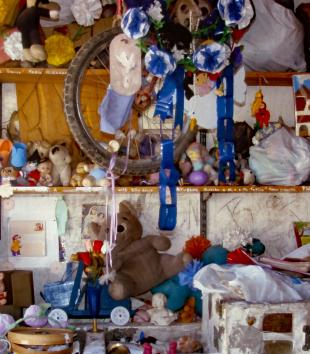 Petitionary Devotion: Folk Saints and Miraculous Images in Spanish America
Petitionary Devotion: Folk Saints and Miraculous Images in Spanish America
Votive practice in the Americas has Indigenous, Christian, and syncretic origins that contribute to the diversity of offerings, as do social class, gender, age, and region. Petitionary devotion is structured by an exchange that the votary proposes to a folk saint or miraculous image. The offerings that votaries promise are based on the presumption that folk saints and miraculous images, because they are like us, value what we value.
A special issue curated by Kati Curts and Alex Kaloyanides
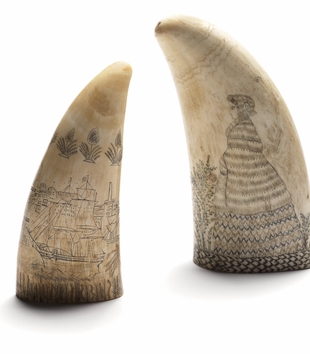 Sperm Whale Teeth in Circulation: A Case Study in Material Economics
Sperm Whale Teeth in Circulation: A Case Study in Material Economics
From Fijian ceremonial objects to nineteenth-century American whaling souvenirs, to airline membership cards, this constellation explores material economies through one raw material: sperm whale teeth.
Guest edited by Amy Holmes-Tagchungdarpa and Kalzang Dorjee Bhutia in collaboration with MAVCOR Journal Editor Emily C. Floyd. The call for papers for this special issue invited scholars coming from diverse disciplines (religious studies, anthropology, archaeology, history of art, visual studies, etc) and working across a range of high altitude ecologies, from the Andes to the Himalayas and beyond, to consider how the specificities of these regions impact material and visual aspects of religious practice. This special issue is published on a rolling basis.
 Qoyllur rit’i: El señor de la Estrella de Nieve
Qoyllur rit’i: El señor de la Estrella de Nieve
En 2012 empecé a hacer un registro gráfico del peregrinaje que poco a poco se convirtió en un proyecto fotográfico. Al intentar comprender este mundo sincrético, la fotografía me permitió plasmar y narrar lo que veía.
 Qoyllur rit’i: The Lord of the Snow Star
Qoyllur rit’i: The Lord of the Snow Star
In 2012, I began to make a graphic record of the pilgrimage, which little by little evolved into a photographic project. In attempting to comprehend the syncretic world of the festival, photography allowed me to capture and narrate what I saw.
This special joint issue is published with The Journal of Southern Religion (JSR). The journals issued a call for papers together in 2017 and are pleased to publish these four peer-reviewed articles, two editorial introductions, and one editorial reflection. In his editorial reflection, Bill Ferris considers his own history with southern religion and material culture. Jason Young and Louis P. Nelson offer introductions for the four articles, with additional reflection on the state of the field.
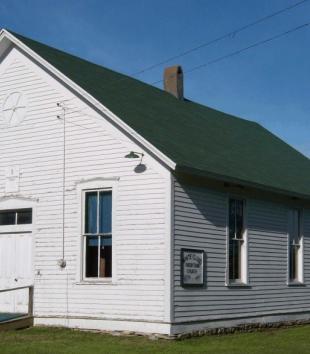 The Second Great Awakening and the Built Landscape of Missouri
The Second Great Awakening and the Built Landscape of Missouri
The simple, gable-end church form was suited to the material circumstances and to the socio-theological climate of the Second Great Awakening. Gable-end churches provided an affective and sensorial locus for newly created communities to position themselves as extensions of an evangelical Protestant national consciousness.
 Adobe and Stone Churches of New Mexico: A Selection
Adobe and Stone Churches of New Mexico: A Selection
The architecture of New Mexican village churches is often described as vernacular, which is to say that the construction materials (adobe, stone, vigas, latillas) are local; the design reflects local taste, tradition, and resources; the construction standards are idiosyncratic, pursuant to the experience, inclinations, and skills of the builders; and the finished product represents the history and cultural identity of the community.
 Street Altars in Mexico City
Street Altars in Mexico City
This series of images, taken over the course of six months, documents the street altars dotted around Mexico’s dense, urbanized capital, home to over twenty-one million people.
MAVCOR began publishing Conversations: An Online Journal of the Center for the Study of Material and Visual Cultures of Religion in 2014. In 2017 we selected a new name, MAVCOR Journal. Articles published prior to 2017 are considered part of Conversations and are listed as such under Volumes in the MAVCOR Journal menu.
 Viaticum, Last Rites Cabinet, Sick Call Set
Viaticum, Last Rites Cabinet, Sick Call Set
Among the material items that might occupy the pre-Vatican II American Catholic home, regardless for the most part of the occupant’s ethnicity or familial nation of origin, the last rites cabinet or viaticum (Latin for “supply of provisions for a journey”) asserted a powerful daily and nightly presence.